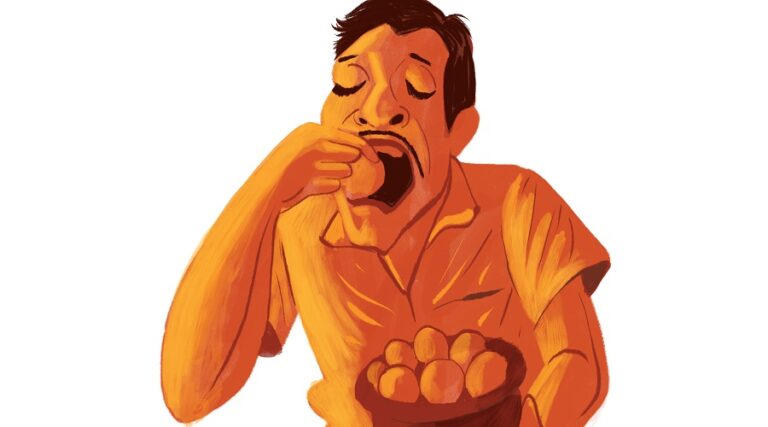Excerpt: Calcutta’s Food History
Mohona Kanjilal’s A Taste of Time: A Food History of Calcutta is a delightful and comprehensive history of food in Calcutta, peppered with mouth-watering nuggets, recipes and intriguing accounts of some revolutionary personalities of Bengal will appeal to the mind and tastebuds alike. Here’s an extract from her her book about the influence of the British:
The Bengal Renaissance of the nineteenth century marked the beginning of a social reform movement heralded by intellectuals and certain groups who had slowly begun to move away from traditional approaches towards a more liberal path. They shouldered responsibility for bringing about the social and cultural rebirth of the city, and their efforts had a strong influence on the masses. This cultural rebirth extended to their food habits as well. At this point, Calcutta’s culinary culture began to undergo a tremendous change, eventually ushering in new cuisines, which grew to be in great demand by the locals.
Various European cuisines left an indelible imprint on the culinary culture of Calcutta. Over the years, they have been moulded and adapted to suit the Bengali palate, leading to a large repertoire of commonly available dishes that owe their origin to various European countries. These do not fit the purist ideals of national cuisines either today, or at the time, but are closer to a fusion cuisine that has both, an undeniably European influence and a local Bengali base.
The British were responsible for introducing certain food habits that have, over the years, become pillars of Calcutta’s culinary culture. One of their major contributions was the introduction of beverages to the Bengali table. Tea, coffee and fresh fruit juices are a fixed part of the average Bengali’s breakfast spread today because of the British influence. This nation strongly influenced the foods Bengalis ate for breakfast as well, introducing typical preparations of egg, sausage, bacon and bread to the local palate. Chops and cutlets, which are today as essential to a Bengali as rice and fish curry, also owe their popularity to the role played by the British in Bengali culinary history. Today, kiosks in every nook and corner of the city make and sell these fried foods, usually as accompaniments to what many perceive as a quintessentially British meal: afternoon tea. Finally, egg-based puddings, now a fixture on Calcutta’s dessert menus, were introduced to the city by the British.
The British not only influenced what Bengalis ate but also how they ate it. Traditionally, meals were eaten sitting on the floor from plates made of either copper or bell metal. The well-to-do, particularly members of the zamindar families, would have their food served on thala-bati (plates and bowls) made of shwet pathor (white marble) or rupo (silver). At grand feasts and festival days, people would eat their food communally, on banana leaves. All of this gradually began to change with the advent of the British. During the British Raj, eating while sitting on the floor was slowly replaced by being seated at a dining table in aristocratic homes. The dining tables and chairs in these homes were made of teak, rosewood and other types of expensive wood. After the British came to Bengal, tableware made of porcelain, bone china, pottery and even enamel was largely imported. During the colonial rule, the aristocratic families began emulating the British and started using cups, saucers and teapots—made of porcelain, bone china and pottery— for tea. Dishes, bowls, serving bowls and other tableware made of the same materials were also used by them. With time, these changes trickled down to the less well-to-do as well. Particularly from the middle of the twentieth century, dining tables and chairs made of less expensive wood and tableware made of pottery began to be seen in middle-class homes.
Breakfast in most Bengali homes traditionally would be parota (as paratha, an unleavened fried flatbread made of refined flour, is known in Bengali) or luchi (a small, round and puffed up unleavened fried bread made of refined flour), which were eaten with tarkari (cooked vegetables). Muri (puffed rice), chire (beaten rice), whole fruits, milk, and fried sweets like gaja, jilipi, khaja and motichur laddus also featured regularly in their breakfast spread. The British generally started the day with a very different meal: eggs with sausage, bacon and hash browns, toasted bread with butter, jam and marmalade, a bowl of porridge, and tea. Bengalis, given their experimental nature, were influenced by these breakfast dishes. Gradually, the complexion of their breakfast spread began to change. Eating bread and eggs for breakfast caught on with them. Bread would mostly be eaten with butter and jam while eggs would largely be eaten boiled or as an omelette. Hard-boiled eggs (sprinkled with salt and pepper) and bread (either plain or buttered) became a favourite combination of the Bengalis. The Westernized lot among them went a step further and included soft-boiled, poached, fried and scrambled eggs in their breakfast menu. Porridge became a common feature at the breakfast table for them and toasted bread was often smeared with butter and marmalade. A cup of tea became a fixture at breakfast for most. But that does not mean Bengalis gave up on their traditional breakfast dishes. Only, it was now often replaced with the British variety.
The strong impact that British food had on the culinary culture of the city led to the growth of many eateries that specialized in the making of this new cuisine. Suddenly, the masses wanted a taste of anything that was British in their attempt to emulate the white sahibs. Entrepreneurs seized this opportunity and many eateries sprang up.

